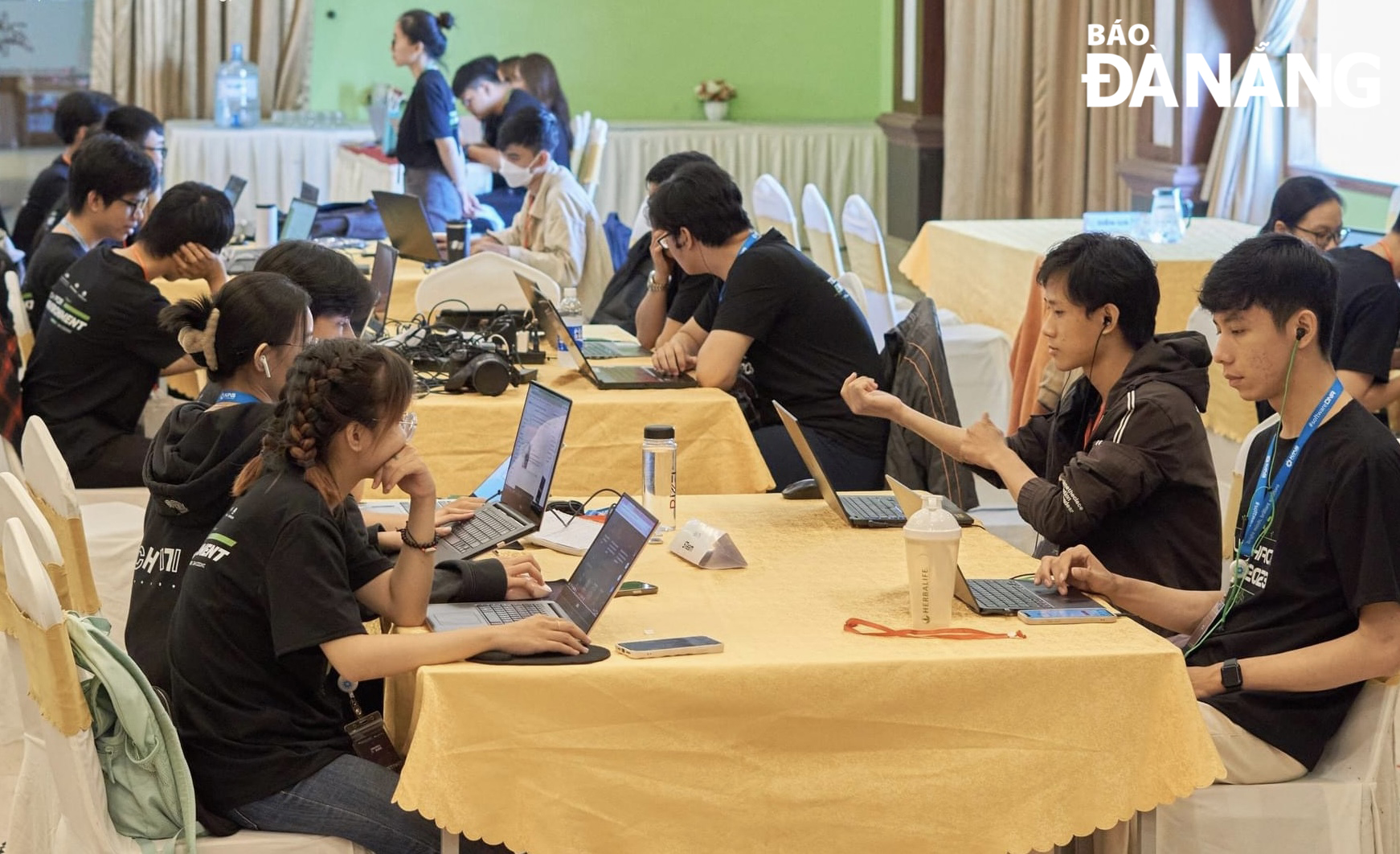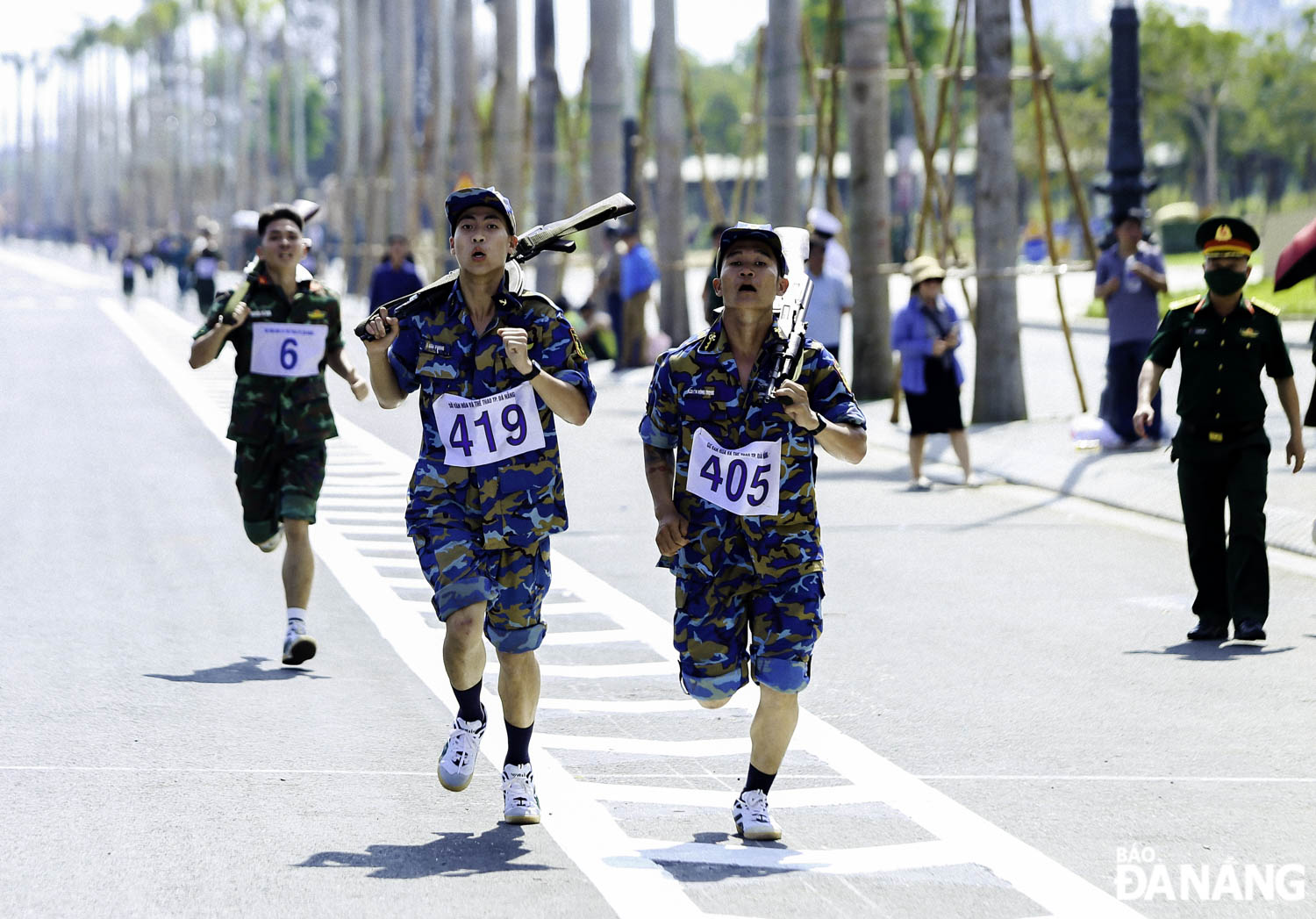Da Nang's economy gradually improves
Da Nang’s economy has gradually recovered after the COVID-19 pandemic, especially tourism, as economic indicators have achieved good results. The positive sign has been mainly attributed to the timely implementation of solutions for economic recovery and growth, and the initiative in catching the new wave of investment.
 |
| During the 2021-2023 period, the industrial-construction production value index is estimated to increase by 2.7% per year. IN THE PHOTO: Production workers at the Daiwa Vietnam Co., Ltd based in Hoa Khanh Industrial Park, Lien Chieu District. Photo: M.Q |
Recovery and restructuring of economic sectors
The annual growth of the city’s gross regional domestic product (GRDP) during the 2021-2023 period is estimated at 7.1%, of which services are likely to increase by 9.2%, industry - construction by 2.7%, agriculture - forestry - fishery by 1.9%, and taxes less subsidies on products by 3%.
In the annual growth of the city's GRDP, the service sector always has the highest contribution, initially forming key economic sectors such as tourism, commercial services, transportation, finance, hi-tech, information technology (IT), and hi-tech agriculture.
The internal structure of the industry has shifted in line with the orientation of industry restructuring with the processing and manufacturing industry accounting for 13.46% (in 2022), the largest in the GRDP.
The internal structure of the agricultural sector has shifted in the right direction, increasing the proportion of the fisheries and forestry sectors, and reducing the proportion of the agricultural sector.
From mid-2021 until now, the city has quickly restored activities in trade, tourism and investment.
Since the Vietnamese government opened up tourism activities in March 15, 2022, the city has focused on restoring key tourist markets such as South Korea, Japan and South Asia, expanding into new and potential tourist markets like India, and prioritizing high-paying customer segments such as MICE guests, golf tourists, luxury resorts, and wedding tourism.
Between 2021 and 2023, the total number of guests served by local accommodation establishments is estimated at 11.3 million, an increase of 32.5%/year. Of the figure, 9.2 million are domestic tourists, up 29.4%/year; whilst the remaining 2.1 million are foreigners, up 44.9%/year.
Total revenue of accommodation, travel and tourism support services is predicted to be VND19,000 billion, up 50.9%/year.
The supply of goods on the market is abundant, and fully and promptly meets production and consumption needs. Total retail sales of goods during the 2021-2023 period is estimated at 11.3%/year.
From 2021 to 2023, export turnover is expected to rise by an average of 12.5%/year, the whole term is expected to achieve an average increase of 9-10%/year (the plan is to increase 8-9%/year). Revenue from transportation, warehousing, postal and delivery services in the 2021-2023 period is estimated to go up by 13.8%/year. Cargo turnover is estimated to increase by 6.9%/year. Cargo volume through Da Nang Port is likely to rise by 4.2%/year.
Over the past 3 years, the city has issued many guidelines and policies to encourage the development of the IT industry, as well as created a favourable environment for investors and developed IT - communication infrastructure for promoting digital transformation.
Accordingly, the total revenue of the city's information and communication industry in the 2021-2023 period is forecast to be VND48,155.7 billion, a rise of 6.36%/year. Software export turnover is estimated at US$376.5 million, up 16.5%/year.
The city has secured its leading position among centrally-governed localities for 12 years in a row in the Viet Nam ICT Index, the rankings on the readiness for information and communications technology (ICT) development and applications, from 2009-2021. It has led in the Digital Transformation Index, as well as won the Vietnam Smart City Award, for three consecutive years from 2020-2022.
 |
| The information technology sector always keeps the momentum of development and growth. IN PHOTO: Programmers at the Unihack 2023 contest. Photo: M.Q |
Focus on attracting investment, deploying key projects
In 2023, the city continues to identify public investment disbursement as an important, meaningful political task and a great role in the implementation of socio-economic development goals and tasks for the 2021-2025 period.
The total medium-term capital plan for the 2021-2025 period according to Decision No. 1885/QD-UBND dated July 15, 2022 of the City People's Committee is VND45,867.3 billion.
Accumulated to 2023, the city has allocated VND23,987.6 billion, reaching 52.3% of the total medium-term plan. In the last 2 years of the medium-term plan, the city strives to allocate the remaining capital according to regulations.
Since 2021, the city has promoted working sessions with 151 investors, including large and prestigious corporations at home and abroad.
As a result, the city has attracted 72 domestic projects with a total registered investment capital of VND65,469 billion, of which 24 projects, totaling VND59,514 billion, were outside industrial parks, hi-tech parks, and Dedicated IT Park, and 48 projects, worth VND5,955 billion in total, inside industrial parks, hi-tech parks, and Dedicated IT Park.
The city has 155 newly licensed FDI projects with a total registered capital of US$227.6 million. Up to now, the city has 760 domestic investment projects with a total registered capital of VND209,916 billion and 1,009 FDI projects with a total investment capital of US$4.081 billion.
Between 2021 and 2023, the city has issued new business registration certificates to 10,342 enterprises, branches and representative offices, with a total registered charter capital of VND51,224 billion.
Accumulated up to now, 37,862 enterprises and branches and representative offices, with a total registered capital of VND 247,183 billion, are operating in the city.
Reporting by M.QUE - Translating by M.DUNG








